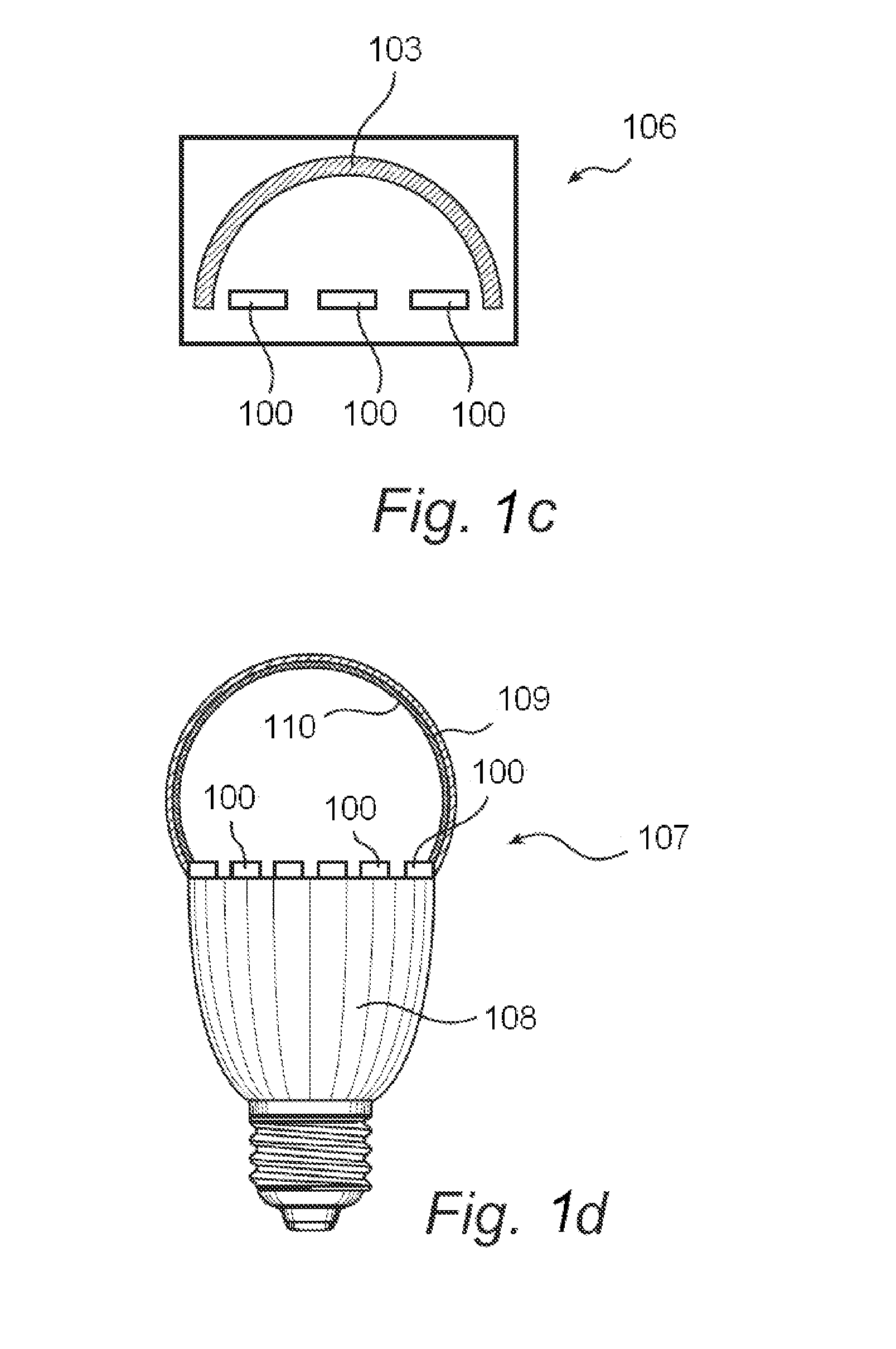Wavelength converting element
a technology of converting elements and wavelengths, applied in the direction of discharge tubes/lamp details, discharge tubes luminescnet screens, lighting and heating apparatus, etc., can solve the problems of loss of device efficiency, inorganic led phosphors suffer from the disadvantage of being relatively expensive, and inorganic led phosphors have limited quantum efficiency, etc., to achieve the effect of increasing the lifetim
- Summary
- Abstract
- Description
- Claims
- Application Information
AI Technical Summary
Benefits of technology
Problems solved by technology
Method used
Image
Examples
example
[0050]In one experiment 0.1% Red F305 dye (which is a commercially available organic phosphor) in a polymethylmethacrylate (PMMA) matrix was used. FIG. 2 shows the emission from a 30 micron thick layer of the prepared PMMA matrix comprising the phosphor material illuminated with blue light of 450 nm at a light flux density of 4.2 W / cm2 as a function of time. The initial absorption in the layer is 10% therefore the intensity is directly related to the dye concentration. As can be seen, the intensity drops irreversibly with time because of photo-chemical reaction, in an exponential function of time with a decay rate k.
[0051]The prepared polymeric material containing the phosphor material was than illuminated with blue light of 450 nm at a light flux density of 4.2 W / cm2 and the decay rate of the phosphor material was measured at various temperatures for various oxygen concentrations. In FIG. 3 the decay rate, which is a measure of the lifetime, is plotted as a function of the inverse ...
PUM
 Login to View More
Login to View More Abstract
Description
Claims
Application Information
 Login to View More
Login to View More - R&D
- Intellectual Property
- Life Sciences
- Materials
- Tech Scout
- Unparalleled Data Quality
- Higher Quality Content
- 60% Fewer Hallucinations
Browse by: Latest US Patents, China's latest patents, Technical Efficacy Thesaurus, Application Domain, Technology Topic, Popular Technical Reports.
© 2025 PatSnap. All rights reserved.Legal|Privacy policy|Modern Slavery Act Transparency Statement|Sitemap|About US| Contact US: help@patsnap.com



